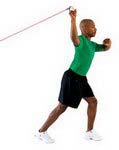 You wouldn't believe how many pitchers loss pitching velocity or prevent a pitching velocity increase just by performing some contraindicated exercises or lifts. In this article, I will give you the list of the top 10 workouts that will decrease pitching velocity. This list will surprise you to the point of maybe even pissing you off because of the countless hours you have more than likely spent performing these velocity destroying workouts.
You wouldn't believe how many pitchers loss pitching velocity or prevent a pitching velocity increase just by performing some contraindicated exercises or lifts. In this article, I will give you the list of the top 10 workouts that will decrease pitching velocity. This list will surprise you to the point of maybe even pissing you off because of the countless hours you have more than likely spent performing these velocity destroying workouts.
The biggest questions I get is why are other coaches and instructors coaching pitchers to do these workouts? Are they aware that these workouts are reducing performance? I will post the reason why these conventional coaches prescribe these workouts that have such a negative effect on developing the high velocity pitcher.
Before we get started hacking up the conventional pitching training program, I need to prepare you so you can not only handle this information, but so that you can not hold it against your conventional coach or instructor which could hurt your chances in this game.
The Conventional Pitching Coach or Instructor
They are a dime a dozen and most of them are in it for the quick money or the fact that their ego just will not quit even after they have quit their careers. Very few, and I stress very few, are actually in it to help the young ball player. This is why I advise most young pitchers to just lookout for yourself because no one else is going to look out for you.
These conventional pitching coaches and instructors have yet to make the quantum leap from helping themselves to helping others. The life of a ball player is a very selfish existence. Why do you think the big leaguer's all have such personal problems like; drugs, women and money? Once their careers have come to a close, they are no longer the entertainer, showing off to the world their talents. If they want to transition to becoming a coach so they can stay in the game then the entertainer in them needs to take a back seat and the educator must step forth. This means first making sure they have the education to educate others. Just because you played a few years in minor league ball doesn't make you an expert on the game. I played two years of minor league ball and at this point in my life I still had never read the baseball rule book.
The education of this game first starts in the medical research that is changing this game everyday and then onto countless hours of video analysis. This isn't Mickey Mantles baseball anymore. He didn't have to fight every single race and culture for his spot on the Yankees. Nor did he have to worry about what he did in the off-season or how many drinks he was going to have a night before the big game. The game today is a high end business and only the fully equipped survive.
Once these coaches get this level of education and have accepted the fact that it is no longer about their career but the careers of their players, then they will become the coach that this game needs many more of today.
Top 10 Workouts That Will Decrease Pitching Velocity
 1) Long Distance Running - This is still a common form of training for baseball players, especially pitchers. It just blows my mind that coaches still prescribe this kind of training with the amount of science that is proven its ineffectiveness in developing power athletes (1,2). Here is a typical result from these studies. This excerpt below comes from one of the case studies referenced at the end of the article which is specific to baseball players.
1) Long Distance Running - This is still a common form of training for baseball players, especially pitchers. It just blows my mind that coaches still prescribe this kind of training with the amount of science that is proven its ineffectiveness in developing power athletes (1,2). Here is a typical result from these studies. This excerpt below comes from one of the case studies referenced at the end of the article which is specific to baseball players.
During the season, the endurance training group decreased an average of 39.50 ± 128.03 watts while the speed group improved an average of 210.63 ± 168.96 watts. These data demonstrate that moderate- to high-intense cardiovascular endurance and neuromuscular power training do not appear to be compatible when performed simultaneously. Baseball players, athletes who rely heavily on power and speed, conventional baseball conditioning involving significant amounts of cardiovascular endurance training should be altered to include more speed/power interval training (2).
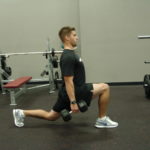 2) Light Weight Strength Training - In top level athletes, a negative relation was found between aerobic power and anaerobic power (1). This is a major problem for power athletes like high velocity pitchers. If you are training to enhance muscular power it must come with an anaerobic power training program. The study above found that aerobic power training will decrease the performance of someone who is an anaerobic power athlete. This means any training that is at a low intensity over a large amount of reps will reduce the performance of an athlete who is forced to meet the demands of a high intensity movement in a short amount of time, like high velocity pitching. The pitching delivery of the high velocity pitcher takes just less than one second and then the pitcher is given adequate amount of time to rest and restore ATP.
2) Light Weight Strength Training - In top level athletes, a negative relation was found between aerobic power and anaerobic power (1). This is a major problem for power athletes like high velocity pitchers. If you are training to enhance muscular power it must come with an anaerobic power training program. The study above found that aerobic power training will decrease the performance of someone who is an anaerobic power athlete. This means any training that is at a low intensity over a large amount of reps will reduce the performance of an athlete who is forced to meet the demands of a high intensity movement in a short amount of time, like high velocity pitching. The pitching delivery of the high velocity pitcher takes just less than one second and then the pitcher is given adequate amount of time to rest and restore ATP.
This type of aerobic training or training that requires a high oxygen demand includes any type of low intensity high rep training. This could be a general strength and conditioning program using light weight with high reps. I find tons and tons of pitchers who are struggling to increase pitching velocity who are in light weight strength training programs which are basically training more aerobically than anaerobic. This is why a heavy load training program is critical for developing the high velocity pitcher.
You can even find these kind of light weight strength training programs at the MLB level. Here is CC Sabathia's strength program when he dropped around 5mph in his pitching velocity that following season:
Even Sabathia, a pro athlete, had to act like a novice in the gym. "If you want to lose weight fast, then you have to start with the basics," says T.J. Lopez, C.S.C.S., Sabathia's trainer, a performance coach with Major League Strength. Using lighter weights or body-weight exercises lets you correct your weaknesses and build stability, and allows your muscles to work more efficiently. All of that will help you move better and drop pounds.
This is from the Men's Health article on how he lost his weight the season before his major velocity decrease in 2013. They called the article, More Fastball's Less Curves. They should have called it, Less Fastball More Curves because he threw more Curveballs in 2013 than in any other season which more than likely had to do with his lack of a fastball. You can checkout his curverball totals here.
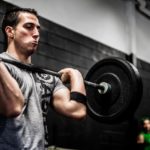 3) Cross Fit Training - As much as I love what Cross Fit has done for Olympic Lifting it is not the best approach for developing pure anaerobic power which is critical for becoming a high velocity pitcher. In this type of training you will perform some quick explosive movements that have the potential to be anaerobic but with the massive amounts of reps, it turns aerobic quickly. Some of these lifts are actually Olympic Lifts but when the rep demand is high and there is a time limit to perform these reps, even the Olympic Lifts become aerobic.
3) Cross Fit Training - As much as I love what Cross Fit has done for Olympic Lifting it is not the best approach for developing pure anaerobic power which is critical for becoming a high velocity pitcher. In this type of training you will perform some quick explosive movements that have the potential to be anaerobic but with the massive amounts of reps, it turns aerobic quickly. Some of these lifts are actually Olympic Lifts but when the rep demand is high and there is a time limit to perform these reps, even the Olympic Lifts become aerobic.
The best advice when using a Cross Fit, is to find if they have any USA Weightlifting Certified Sports Performance Coaches and ask then if they can work with you privately on technique as you use the 3X Pitching Velocity Program and not the general populations Cross Fit training programs.
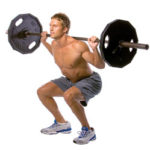 4) Range of Motion Restricted Exercises - Another major problem with the convention wisdom of baseball is that if you do strength training then you must limit your range of motion. For example, you can not squat weight below your knees, you can not press the bar over the head and you can not lower the bar with a bench press to the chest to name a few restrictions. This is just ridiculous. There is no science proving that baseball players or pitchers should have these range of motion restrictions.
4) Range of Motion Restricted Exercises - Another major problem with the convention wisdom of baseball is that if you do strength training then you must limit your range of motion. For example, you can not squat weight below your knees, you can not press the bar over the head and you can not lower the bar with a bench press to the chest to name a few restrictions. This is just ridiculous. There is no science proving that baseball players or pitchers should have these range of motion restrictions.
These restrictions in range of motion actually cause a problem when it comes to flexibility. You will reduce joint mobility and performance if you lift within these short range of motions. Once the pitcher is taught good posture and body positions then full range of motion is natural and healthy.
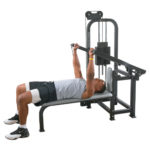 5) Machine Lifting - This kind of strength training which uses machines to control the movement pattern forces the athlete into a fixed bar path which can force pattern overload. This causes dysfunctional motor coordination and creates instability in the joint which leads to poor mechanics and eventually injury. I find many high school and college programs using too many machine lifts. To learn more checkout this article on Pattern Overload and the Pitcher.
5) Machine Lifting - This kind of strength training which uses machines to control the movement pattern forces the athlete into a fixed bar path which can force pattern overload. This causes dysfunctional motor coordination and creates instability in the joint which leads to poor mechanics and eventually injury. I find many high school and college programs using too many machine lifts. To learn more checkout this article on Pattern Overload and the Pitcher.
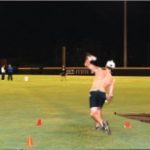 6) Extreme Long Toss - Maximum-distance throws produce increased torques and changes in kinematics. Caution is, therefore, advised in the use of these throws for rehabilitation and training (3). This was the result of the extreme long toss study performed by the legendary American Sports Medicine Institute. Checkout this article called, Study Proves Max Distance Long Toss Decreases Pitching Velocity, to learn more about this study and how this approach not only can lead to more wear and tear on the arm but how it actually decreases pitching velocity.
6) Extreme Long Toss - Maximum-distance throws produce increased torques and changes in kinematics. Caution is, therefore, advised in the use of these throws for rehabilitation and training (3). This was the result of the extreme long toss study performed by the legendary American Sports Medicine Institute. Checkout this article called, Study Proves Max Distance Long Toss Decreases Pitching Velocity, to learn more about this study and how this approach not only can lead to more wear and tear on the arm but how it actually decreases pitching velocity.
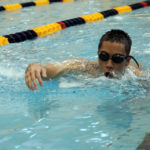 7) Swimming - This is another form of aerobic training and we all know of Tim Lincecum's swim routine that helped him loss around 22 pounds which almost destroyed his 90+ velo. The problem with swimming, besides it being more aerobic than anaerobic, is that it is an anti-gravity environment. Outside of rehabilitation, this is not the environment to train a high velocity pitcher in. High velocity pitchers not only generate high levels of ground reaction forces but they use these forces to put high amounts of torques and forces on the body.
7) Swimming - This is another form of aerobic training and we all know of Tim Lincecum's swim routine that helped him loss around 22 pounds which almost destroyed his 90+ velo. The problem with swimming, besides it being more aerobic than anaerobic, is that it is an anti-gravity environment. Outside of rehabilitation, this is not the environment to train a high velocity pitcher in. High velocity pitchers not only generate high levels of ground reaction forces but they use these forces to put high amounts of torques and forces on the body.
 8) High Rep Resistance Tubing - Mainly pitchers make this mistake in-season. They do tons and tons of reps with resistance tubing to strengthen the shoulders and cuff. This, with all of the throws made in-season, can quickly push a pitcher into over training where the muscles are over fatigued and struggle to recover. This will lead to a quick drop in velocity along with arm pain. Many young pitchers do not want to strength train and instead will overuse resistance tubing on the shoulders and arms. Resistance tubing used without too many reps will support velocity but in the case of too many reps in-season you can quickly have too much of a good thing and be working against yourself.
8) High Rep Resistance Tubing - Mainly pitchers make this mistake in-season. They do tons and tons of reps with resistance tubing to strengthen the shoulders and cuff. This, with all of the throws made in-season, can quickly push a pitcher into over training where the muscles are over fatigued and struggle to recover. This will lead to a quick drop in velocity along with arm pain. Many young pitchers do not want to strength train and instead will overuse resistance tubing on the shoulders and arms. Resistance tubing used without too many reps will support velocity but in the case of too many reps in-season you can quickly have too much of a good thing and be working against yourself.
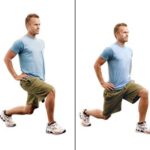 9) Non-Ballistic Strength Training - The pitching delivery of a high velocity pitcher is a ballistic movement that takes less than 1 second to perform. Studies have shown ballistic strength training will increase throwing velocity (4). Using strength training programs that do not use lifts and exercises that force the athlete to generate maximum power in less than 1 second will have no effect on enhancing performance and if they are aerobic can decrease velocity.
9) Non-Ballistic Strength Training - The pitching delivery of a high velocity pitcher is a ballistic movement that takes less than 1 second to perform. Studies have shown ballistic strength training will increase throwing velocity (4). Using strength training programs that do not use lifts and exercises that force the athlete to generate maximum power in less than 1 second will have no effect on enhancing performance and if they are aerobic can decrease velocity.
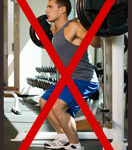 10) No Strength Training - This should be an obvious link to a decrease in pitching velocity. There are countless studies that link some type of strength training to an increase in pitching velocity (5,6,7,8,9,10). It is just absurd to learn that conventional pitching coaches still believe that strength training will actually decrease performance or will not do anything at all to your pitching velocity. Just reading the case studies listed here will give you a quick impression that doing no strength training at all is complete ignorance of the science that is evolving the performance of this game.
10) No Strength Training - This should be an obvious link to a decrease in pitching velocity. There are countless studies that link some type of strength training to an increase in pitching velocity (5,6,7,8,9,10). It is just absurd to learn that conventional pitching coaches still believe that strength training will actually decrease performance or will not do anything at all to your pitching velocity. Just reading the case studies listed here will give you a quick impression that doing no strength training at all is complete ignorance of the science that is evolving the performance of this game.
The #1 Pitching Velocity Training Program
 This program has helped tons of pitchers live the dream of throwing 90+mph and signing with a D1 University, getting drafted by a Major League Organization and making it back to Major League Baseball. Many scouts in all organizations of baseball have recommended this program to help young pitchers get to the 90+mph range to improve their value at the next level.
This program has helped tons of pitchers live the dream of throwing 90+mph and signing with a D1 University, getting drafted by a Major League Organization and making it back to Major League Baseball. Many scouts in all organizations of baseball have recommended this program to help young pitchers get to the 90+mph range to improve their value at the next level.
The reason the 3X Extreme Pitching Velocity Program works is because it is based off of science and it has been proven to develop the 90+mph fastball on thousands of pitchers. It isn't rocket science or voodoo, it is the real deal! The program comes with a high level workload of drills, lifts and exercises scientifically programmed to enhance throwing speed on the mound while developing an efficient pitching delivery. The format of the 3X Pitching Velocity Program is similar to the same approach Olympic throwers have been using for decades to increase throwing velocity. This approach isn't new to the sports world but it is new to baseball.
If you are serious about your career and are insanely driven to put yourself into an extremely small percentage of pitchers who are potential D1 prospects, top level draft picks or you just want to reach your potential on the mound then this program is the best chance you have to making your dreams come true.
Learn more about the 3X Extreme Pitching Velocity Program or get started TODAY adding 5-10+mph!

Reference:
- Crielaard JM, Pirnay F. - Anaerobic and aerobic power of top athletes. - Eur J Appl Physiol Occup Physiol. 1981;47(3):295-300.
-
Rhea MR, Oliverson JR, Marshall G, Peterson MD, Kenn JG, Ayllón FN. - Noncompatibility of power and endurance training among college baseball players. - Department of Interdisciplinary Studies, AT Still University, Mesa, Arizona, USA. - J Strength Cond Res. 2008 Jan;22(1):230-4.
-
Fleisig GS, Bolt B, Fortenbaugh D, Wilk KE, Andrews JR. - Biomechanical comparison of baseball pitching and long-toss: implications for training and rehabilitation. - American Sports Medicine Institute, 833 St. Vincent’s Drive, Suite 100, Birmingham, AL 35205, USA. - J Orthop Sports Phys Ther. 2011 May;41(5):296-303.
-
McEvoy, Kerry P.; Newton, Robert U. - Baseball Throwing Speed and Base Running Speed: The Effects of Ballistic Resistance Training. - Journal of Strength & Conditioning Research: November 1998.
-
Wooden MJ, Greenfield B, Johanson M, Litzelman L, Mundrane M, Donatelli RA. - Effects of strength training on throwing velocity and shoulder muscle performance in teenage baseball players. - J Orthop Sports Phys Ther. 1992;15(5):223-8.
-
Escamilla RF, Fleisig GS, Yamashiro K, Mikla T, Dunning R, Paulos L, Andrews JR. - Effects of a 4-week youth baseball conditioning program on throwing velocity. - Andrews-Paulos Research and Education Institute, Gulf Breeze, Florida, USA. - J Strength Cond Res. 2010 Dec;24(12):3247-54.
-
Escamilla RF, Ionno M, deMahy MS, Fleisig GS, Wilk KE, Yamashiro K, Mikla T, Paulos L, Andrews JR. - Comparison of three baseball-specific 6-week training programs on throwing velocity in high school baseball players. - Department of Physical Therapy, California State University, Sacramento, California, USA. - J Strength Cond Res. 2012 Jul;26(7):1767-81.
-
McEvoy, Kerry P.; Newton, Robert U. - Baseball Throwing Speed and Base Running Speed: The Effects of Ballistic Resistance Training. - Journal of Strength & Conditioning Research: November 1998.
-
Newton, Robert U.; McEvoy, Kerry I. - Baseball Throwing Velocity: A Comparison of Medicine Ball Training and Weight Training. - Journal of Strength & Conditioning Research: August 1994.
-
VAN DEN TILLAAR, ROLAND - Effect of Different Training Programs on the Velocity of Overarm Throwing: A Brief Review. - Journal of Strength & Conditioning Research: May 2004.




I ran cross country this fall for the college. While, there were some times I got to run full sprints, we definitely ran long distance. I hope that this didn’t decrease my velocity with the science that you give.
While I was running cross country, I also did heavy squats and heavy deadlifts, don’t know if that ‘evens’ it out.